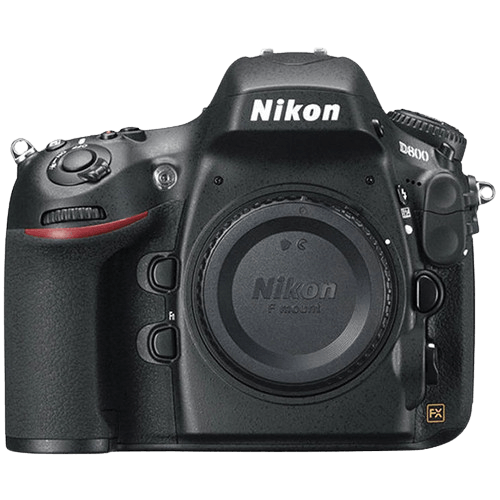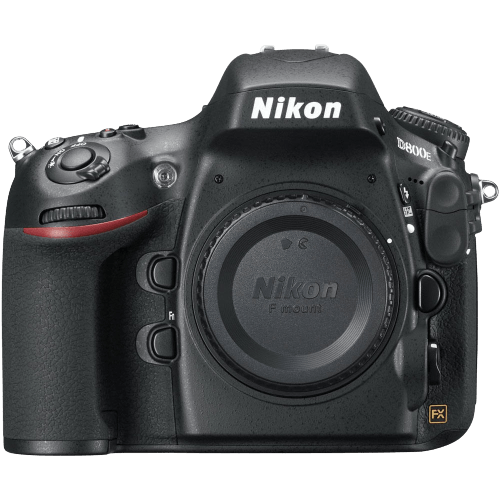Nikon D800 vs D800E Comparison
Nikon D800

Nikon D800E

The Nikon D800 and D800E are both DSLR cameras with identical scores of 69/100. Announced on the same day in 2012, they share many common specifications. Both cameras have the same dimensions (146 x 123 x 82mm) and weight (1000g / 2.20lbs), making them equally portable and convenient to handle.
The D800E edges out the D800 with a higher launch price of $3300, compared to the D800’s $2999. This higher price may reflect improved features or performance in the D800E. However, the D800 has the advantage of being more affordable for those on a budget.
Considering their identical scores and shared specifications, it’s up to personal preference and budget when choosing between the Nikon D800 and D800E. The D800E may offer slightly better performance, while the D800 provides a more budget-friendly option.
Nikon D800 vs D800E Overview and Optics
The Nikon D800E emerges as the winner in optics, albeit with a slight edge over the Nikon D800, as both cameras scored 74/100. They share several common specifications, such as 36.3 megapixels, a shooting speed of 4 frames per second, a CMOS sensor type, an Expeed 3 processor, full-frame sensor size, Nikon F FX lens mount, and the absence of image stabilization.
The superiority of the Nikon D800E lies in its DXOMARK sensor score of 96, one point higher than the Nikon D800’s score of 95. This difference indicates that the D800E has slightly better image quality, particularly in terms of color depth, dynamic range, and low-light performance. This advantage is essential for photographers seeking the best possible image quality from their camera.
On the other hand, the Nikon D800 holds its own in terms of optics, matching the D800E in most specifications. Its DXOMARK sensor score of 95 is still commendable and ensures excellent image quality. The D800 may be a better choice for photographers who prioritize budget and are satisfied with the high-quality images it can produce.
Both cameras offer exceptional optics, with the Nikon D800E possessing a slight advantage in terms of image quality. However, the Nikon D800 remains a strong contender, especially for those with budget considerations. Ultimately, the choice between these two cameras depends on the photographer’s specific needs and preferences.
Nikon D800 vs D800E Video Performance
The Nikon D800 and Nikon D800E have identical video capabilities, as evidenced by their equal video scores of 57/100. Both cameras share the same specifications, including Full HD video resolution, 1920 x 1080 video dimensions, a maximum video frame rate of 30fps, and built-in time-lapse functionality.
Since both cameras have the same video capabilities, neither camera is superior in this regard. The Nikon D800 and D800E both have Full HD video resolution, allowing users to capture high-quality video footage. The 1920 x 1080 video dimensions provide a clear and detailed image for both cameras. The maximum video frame rate of 30fps ensures smooth motion in videos, while the built-in time-lapse functionality allows for creative and engaging video content.
Although neither camera outperforms the other in video capabilities, the identical specifications mean that users can expect the same level of performance from both the Nikon D800 and D800E. This is an advantage for those who may be considering either camera for their video needs, as they can be confident that their choice will not result in a compromise in video quality or features.
Given the equal video capabilities of the Nikon D800 and D800E, potential buyers can focus on other factors when making their decision, such as price, additional features, or personal preference. The equal video scores and shared specifications between the two cameras ensure that users will not be disappointed with the video performance of either model.
Nikon D800 vs D800E Features and Benefits
The Nikon D800 and Nikon D800E both receive a feature score of 57/100, making it a tie in terms of camera features. These cameras share several specifications, such as a 3.2-inch screen size, screen resolution of 921,000 dots, and the absence of a touchscreen, flip screen, GPS, and Bluetooth. Both cameras also come equipped with Wi-Fi capabilities.
Despite having the same score, there are some aspects in which one camera may be preferred over the other. The Nikon D800E is a better choice for photographers who prioritize image sharpness and detail, as it has an optical low-pass filter (OLPF) that does not blur high-frequency detail. This means the D800E can capture sharper images than the D800.
On the other hand, the Nikon D800 may be more suitable for those who often shoot in conditions where moir�� patterns and false colors are likely to appear, such as when photographing fabrics or patterns. The D800’s OLPF reduces these artifacts, making it better for these specific situations.
In comparing the features of the Nikon D800 and Nikon D800E, it becomes clear that the choice between these two cameras depends on the specific needs of the photographer. If image sharpness and detail are of utmost importance, the Nikon D800E is the better choice. However, if minimizing moir�� patterns and false colors is a priority, the Nikon D800 is more suitable. Despite their identical feature scores, the decision ultimately lies in the user’s preferences and requirements.
Nikon D800 vs D800E Storage and Battery
The Nikon D800 and Nikon D800E have identical storage and battery scores, both receiving 71/100. They share the same specifications in this category, including two memory card slots, compatibility with SD/SDHC/SDXC (UHS-I compatible) and Compact Flash memory cards, a battery life of 900 shots, and the use of an EN-EL15 battery. Neither camera supports USB charging.
Given their identical scores and specifications, it is clear that both cameras perform equally well in terms of storage and battery capabilities. There is no advantage for the Nikon D800 or the Nikon D800E in this aspect, making it a draw between the two models.
As a result, potential buyers can focus on other factors to determine which camera best suits their needs, knowing that the storage and battery performance of the Nikon D800 and Nikon D800E are on par with each other.
Nikon D800 vs D800E – Our Verdict
Are you still undecided about which camera is right for you? Have a look at these popular comparisons that feature the Nikon D800 or the Nikon D800E:

